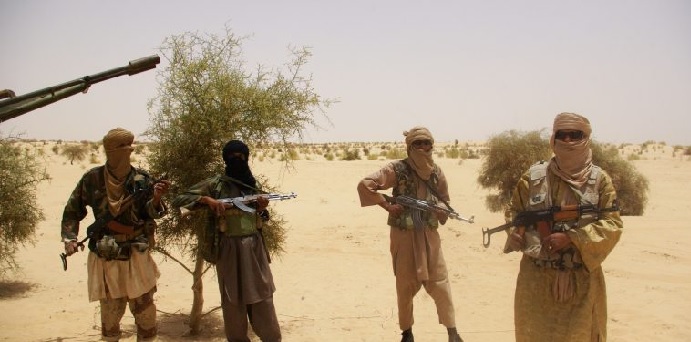
Northwestern Nigeria is increasingly becoming a focal point for Boko Haram factions.
The increase in banditry in northwestern Nigeria, facilitated in part by weak and ineffectual government, has enabled Boko Haram to establish ties with criminals and other non-state actors.
Although most attacks in northwestern Nigeria remain unclaimed, the tactics and targeting resemble those of Boko Haram factions.
The increasing convergence of the areas of operations of Sahelian and Nigerian jihadist groups makes cooperation between them likely.
Northeastern Nigeria has been a hotbed of jihadist activity for well over a decade. The first group to emerge in 2010 was Jamaat Ahlussunah Li-Dawa wal-Jihad (JASDJ), which became Islamic State in West Africa Province (ISWAP) in 2015 when its leader, Abubakar Shekau, pledged loyalty to Abubakar al-Baghdadi. Although JASDJ was inactive by 2015 when ISWAP formed, Shekau subsequently revived JASDJ the following year. This occurred after ISWAP split, Shekau was dethroned, and another leader assumed control over the organization. Both ISWAP and JASDJ, however, are commonly called ‘Boko Haram’ (Western education is sinful), even though they do not use the name themselves. A third faction, loyal to al-Qaeda and known as Ansaru, was founded in 2012, and while mostly dormant since 2015, its ideology appears to be a motivating factor behind several attacks that remain unclaimed in Northwestern Nigeria.
Notwithstanding ISWAP and JASDJ’s rivalry, they mostly avoided conflict with each after 2016. At the same time though, they both devastated Nigeria’s northeastern-most Borno State. ISWAP launched sophisticated attacks and raids on Nigerian military barracks, as well as roadside ambushes in western, northern, and eastern Borno. For its part, JASDJ repelled military and security forces’ attempts to capture its main bases in southern Borno. By early 2020, both groups were also operating around the broader Lake Chad region, including in Niger, Chad, and Cameroon. Although JASDJ and Ansaru were active in northwestern Nigeria in 2012-2013 and northeastern Nigeria has been under constant threat since 2010, northwestern Nigeria largely fell off the jihadist radar in the past half-decade.
Conflict dynamics in Nigeria seem to be changing. Since 2017, banditry in northwestern Nigerian has grown more acute. Civilians are increasingly targeted with kidnapping for ransom (KFR) plots. Raids to pillage and plunder villages are becoming more common with each passing month. There have been a number of raids resulting in significant collateral damage and dozens of civilians killed. One reason for the rise in banditry is continued ineffectual governance in northwestern Nigeria alongside the loss of grazing land due to environmental degradation. An additional side effect of banditry in northwestern Nigeria is that it presents opportunities for ISWAP and JASDJ to escape pressure in Borno and raise funds by looting local communities. They can further expand their influence and spread their ideology by linking with bandit groups in northwestern Nigeria, a crime-terror nexus also evident in parts of the Sahel. The first sign of ISWAP moving into northwestern Nigeria occurred in October 2019, when it claimed an attack in Sokoto from a base in Niger. Villagers subsequently reported seeing ‘bandits,’ who told them they were in ISWAP. JASDJ followed with two videos in July and August 2020 concerning northwestern Nigeria. The first one featured fighters in northwestern Nigeria’s Niger and Zamfara states declaring loyalty to Abubakar Shekau, while the second video featured hundreds of JASDJ members praying in a camp in Niger State on Eid al-Adha in an apparent show of force by the group. Meanwhile, Ansaru has grown active over recent months, claiming responsibility for several attacks in northwestern Nigeria. A number of other attacks in the region, including on village churches and prominent tribal chiefs and leaders, appear consistent with Ansaru ideology and targeting selection. However, most attacks remain unclaimed.
Amid recent reports from the United States, Nigeria, and the United Nations about al-Qaeda’s growing involvement in northwestern Nigeria, it is becoming increasingly clear that Ansaru is competing with JASDJ and ISWAP in the region. Moreover, the threat from jihadists to security throughout Nigeria is spreading to the northwest from the northeast. This also raises possibilities for ISWAP and Ansaru to link with their jihadist allies in Islamic State and al-Qaeda-allied groups in neighboring Niger and the Sahel more broadly. An ‘arc of instability’ in the Sahel, seems to have materialized, and local and regional authorities are unequipped to deal with it effectively. Moreover, recent events in northwestern Nigeria suggest groups in Nigeria and the Sahel are operating more closely to one another. Given their mutual loyalties and the longstanding history of cooperation between Sahelian and Nigerian jihadists, it is likely that such groups will again work together when it is in their mutual interest, building on a crime-terror nexus that is ever-present in Nigeria and the Sahel.
